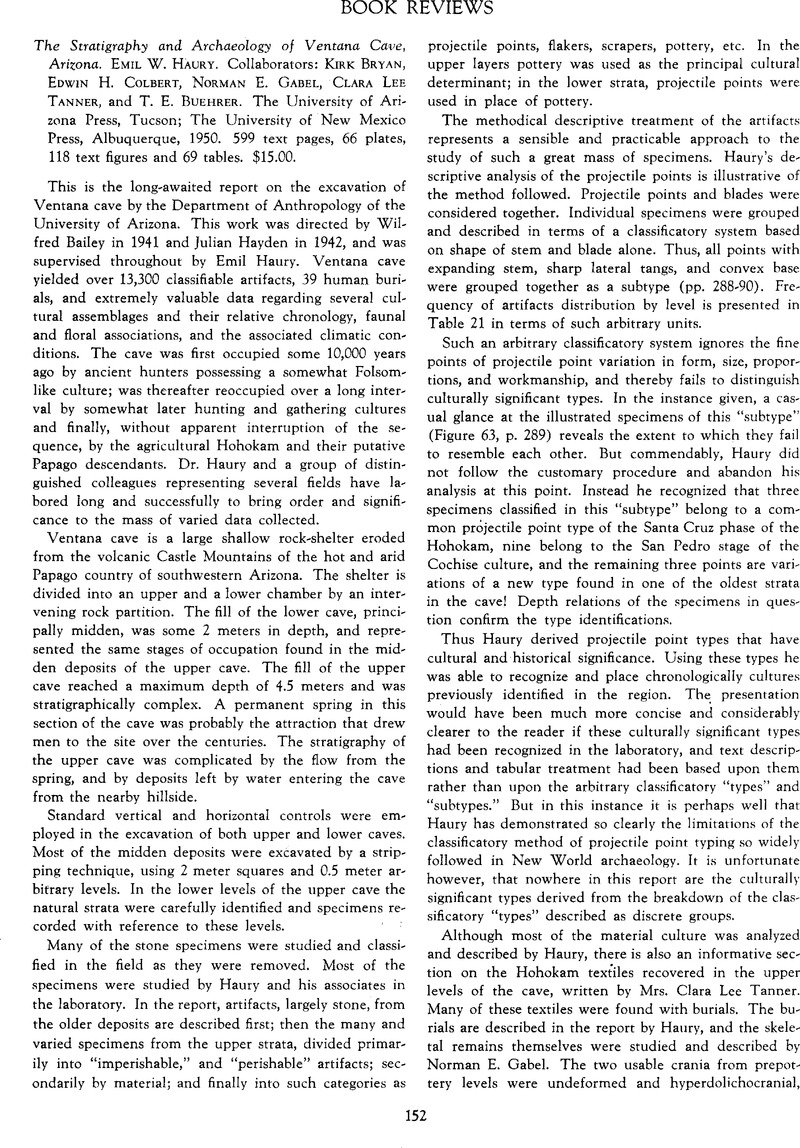No CrossRef data available.
Article contents
The Stratigraphy and Archaeology of Ventana Cave, Arizona. Emil W. Haury. Collaborators: Kirk Bryan, Edwin H. Colbert, Norman E. Gabel, Clara Lee Tanner, and T. E. Buehrer. The University of Arizona Press, Tucson; The University of New Mexico Press, Albuquerque, 1950. 599 text pages, 66 plates, 118 text figures and 69 tables. $15.00.
Published online by Cambridge University Press: 25 January 2017
Abstract

- Type
- Book Reviews
- Information
- Copyright
- Copyright © The Society for American Archaeology 1951
References
1 Richard Foster Flint, “Pinpointing the Past with the Cosmic Clock,” Natural History, May 1951, pp. 200–6. See page 206.
2 J. Charles Kelley, T. N. Campbell, and Donald J. Lehmer, “The Association of Archaeological Materials with Geological Deposits in the Big Bend Region of Texas,” Sul Ross State Teachers College Bulletin, Vol. XXI, No. 3, Alpine, 1940. See pp. 64–71; 107–116.
3 J. R. Arnold and W. F. Libby, “Radiocarbon Dates,” Science, Vol: 113, No. 2927, PP. 111–120, 1951. See p. 115, Nos. 515, 556, 519. It is interesting to note that the dates for the Sulphur Springs Stage of the Cochise given here (circa 6210–7756) place it between Folsom and the later Chiricahua Stage of the Cochise—exactly where Haury suggests in this book that it belongs.
4 Kelley, Campbell, and Lehmer, 1940. See pp. 27–9; 110–11.
5 Kirk Bryan and Joseph H. Toulouse, Jr., “The San Jose Non-Ceramic Culture and Its Relation to a PueWqari Culture in New Mexico,” American Antiquity, Vol. 8, No. 3, 1943, pp., 269–80.
6 Arnold and Libby, 1951, pp. 15–16, Nos. 221,,222
7 Walter W. Taylor, “A Study of Archaeology,” American Anthropologist, Memoir, Number 69, 1948.


